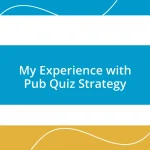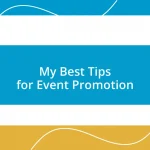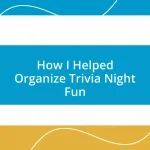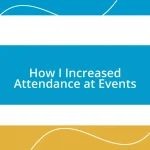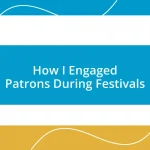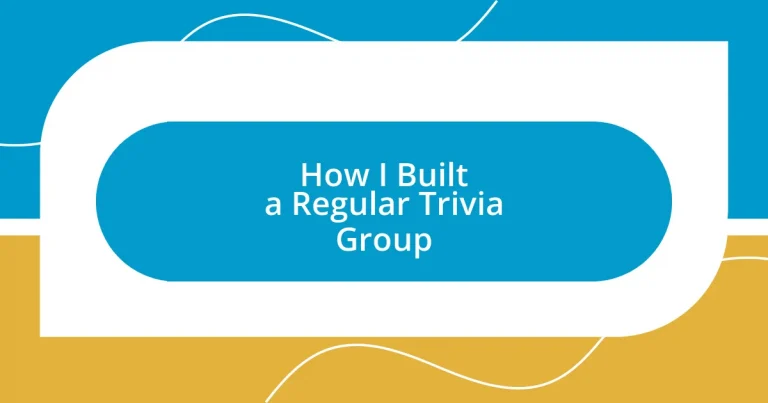Key takeaways:
- Choosing team members with diverse knowledge and emotional intelligence enhances the enjoyment and dynamics of trivia nights.
- Establishing a consistent schedule and rotating hosting responsibilities fosters commitment and excitement among participants.
- Incorporating participant feedback and varying trivia topics and formats keeps sessions engaging and encourages stronger connections within the group.
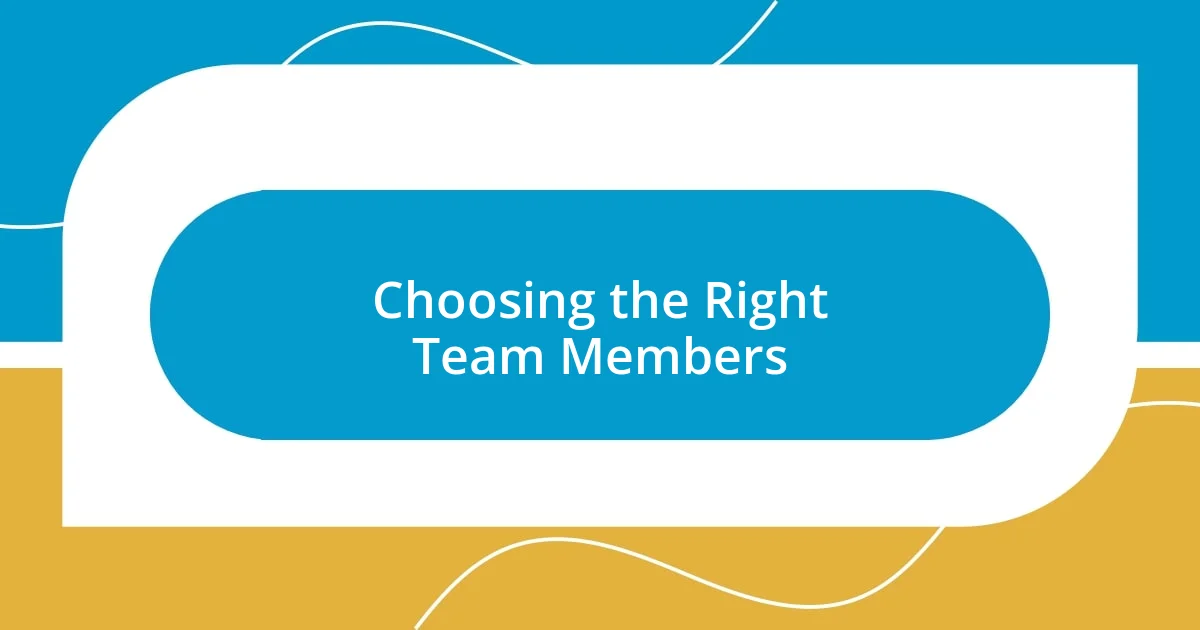
Choosing the Right Team Members
When I was forming my trivia group, I quickly realized that the right mix of personalities was crucial. Having a blend of knowledge seekers, enthusiastic competitors, and those with a great sense of humor made each session not just educational but also fun. I often wonder, what’s the point of gathering if you’re not also enjoying the company?
One memorable recruit was my friend Dave, who always seemed to know random facts about obscure topics. His presence shifted our trivia nights from just answering questions to lively debates over the minutiae of pop culture and history. This variety in expertise really kept us engaged—do you see how having diverse strengths can elevate the whole experience?
I also learned that emotional intelligence plays a significant role in team dynamics. For instance, including a teammate who could lighten the mood after a tough round truly made a difference. It’s a reminder that trivia isn’t just about who knows the most; it’s also about how we connect as a group. How do you think your team’s vibe would change with just one empathetic member?
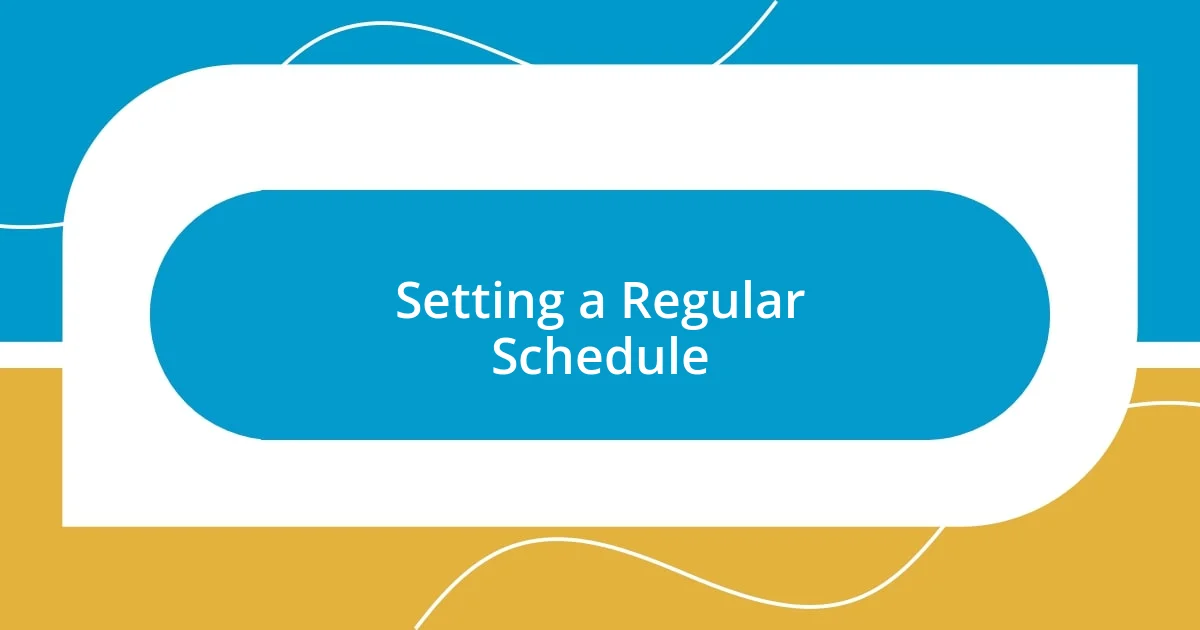
Setting a Regular Schedule
Establishing a regular schedule for trivia nights was a game changer for my group. We decided on a specific day and time each week and stuck to it as religiously as possible. This consistency not only helped ensure everyone could plan ahead but also bred excitement week after week, as we all looked forward to our trivia sessions just like one would anticipate a favorite TV show.
Here are some strategies that worked for us:
- Choose a Day That Works for Everyone: We experimented before settling on Thursday evenings, which turned out to be ideal for most team members.
- Set a Clear Time Limit: Each session was planned for two hours, creating a rhythm that allowed us to get through questions without feeling rushed.
- Use a Calendar Reminders: Everyone agreed to set reminders on our phones, ensuring that no one forgot a session.
- Rotate Locations: We kept things fresh by switching hosts weekly, which also made planning easier and added a personal touch to each trivia night.
In my experience, the excitement of knowing exactly when trivia was happening became a cornerstone of our group’s culture. When we’re all committed to that shared time, it builds a sense of belonging and anticipation that enhances the overall experience. It’s amazing how a simple schedule can create a tradition that people genuinely look forward to!
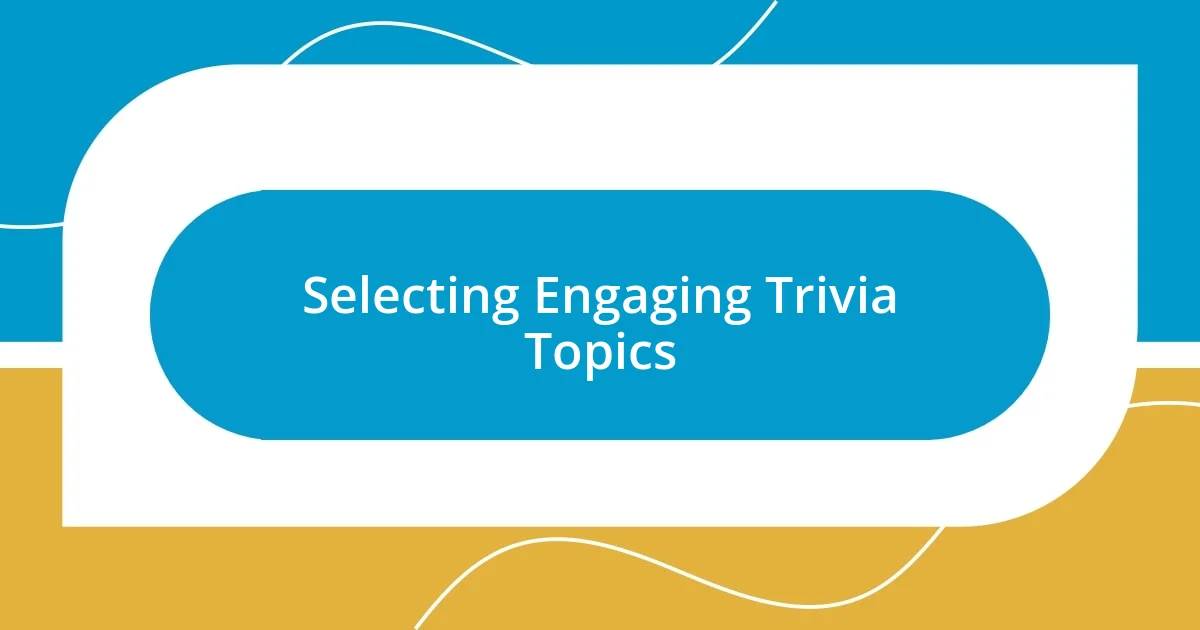
Selecting Engaging Trivia Topics
Selecting engaging trivia topics is essential for keeping the excitement alive in any trivia group. I’ve found that tapping into various categories not only spices up the game but also caters to different interests within the team. For instance, while some might thrive on sports trivia, others may shine in categories like movies or history. This balance keeps the game dynamic and ensures that everyone has a chance to contribute. Have you ever noticed how the energy shifts when a well-loved category comes up?
As we curated our trivia topics, I made it a point to consider current events and pop culture phenomena. The thrill of a recent blockbuster film or viral social media trend can invigorate our sessions. I remember the buzz during our game when we included questions about the latest “Game of Thrones” season. It sparked not just excitement, but also a healthy debate about character arcs. And let’s not forget the nostalgia factor; revisiting beloved childhood cartoons in trivia can ignite fond memories and laughter, breaking any ice that might linger at the start of the night.
It’s also crucial to engage your teammates in the topic selection process. I openly asked for suggestions during our sessions, leading to the introduction of a “Theme Night” concept. One memorable evening was dedicated to 80s music, where we not only answered questions but shared our favorite tracks. This gave everyone a chance to share their passions, creating stronger bonds. It’s those personal connections that enhance the experience. Have you tried this approach? I genuinely believe that when everyone gets involved, the enthusiasm doubles.
| Category | Engagement Level |
|---|---|
| Sports | Medium |
| Movies | High |
| History | Medium |
| Pop Culture | Very High |
| Childhood Cartoons | High |
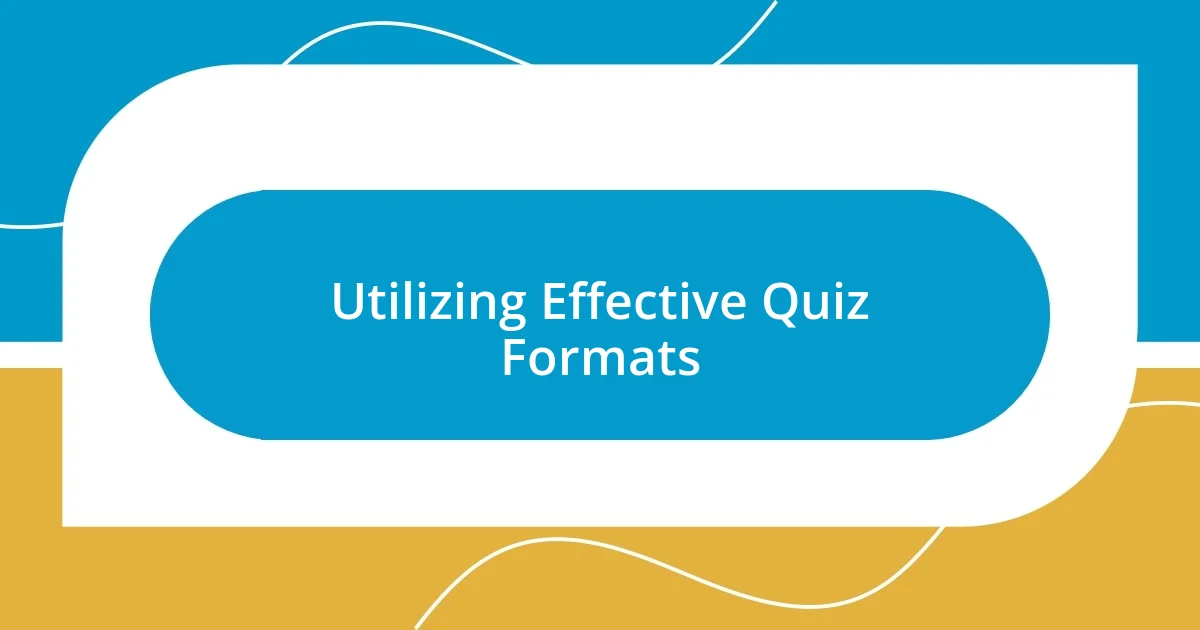
Utilizing Effective Quiz Formats
Utilizing different quiz formats has been a revelation for my trivia group. We’ve experimented with multiple styles, from rapid-fire rounds to themed challenges, and each format brought its own unique flair. I remember one night when we tried a “Lightning Round” where participants had only 30 seconds to answer a series of questions. The adrenaline was palpable, and I could literally feel the competitive spirit surging through the room. Have you tried varying your quiz formats? It can really transform the atmosphere!
Another format that proved to be a hit was the team collaboration rounds. Breaking into smaller teams not only encouraged camaraderie but also shifted the dynamic significantly. For instance, during one session, we had a “Picture Round” where each team identified famous landmarks. The laughter and banter that floated across the room as teams debated their guesses created such a lively atmosphere. Who doesn’t love a little friendly competition? The joy of teamwork often sparked conversations that lasted long after the trivia night ended.
Lastly, I found that incorporating a bonus round with higher stakes was a fantastic way to keep everyone on their toes. We introduced a “Risk It All” segment where teams could wager points on a particularly tough question. The thrill was palpable, and I distinctly remember the gasps when one team banked everything on a single question. It’s moments like these that turn a simple trivia night into a memorable event. Each format is a chance to keep things fresh and engaging—have you looked into how different formats can reshape your trivia experience? Trust me, it’s worth the exploration!
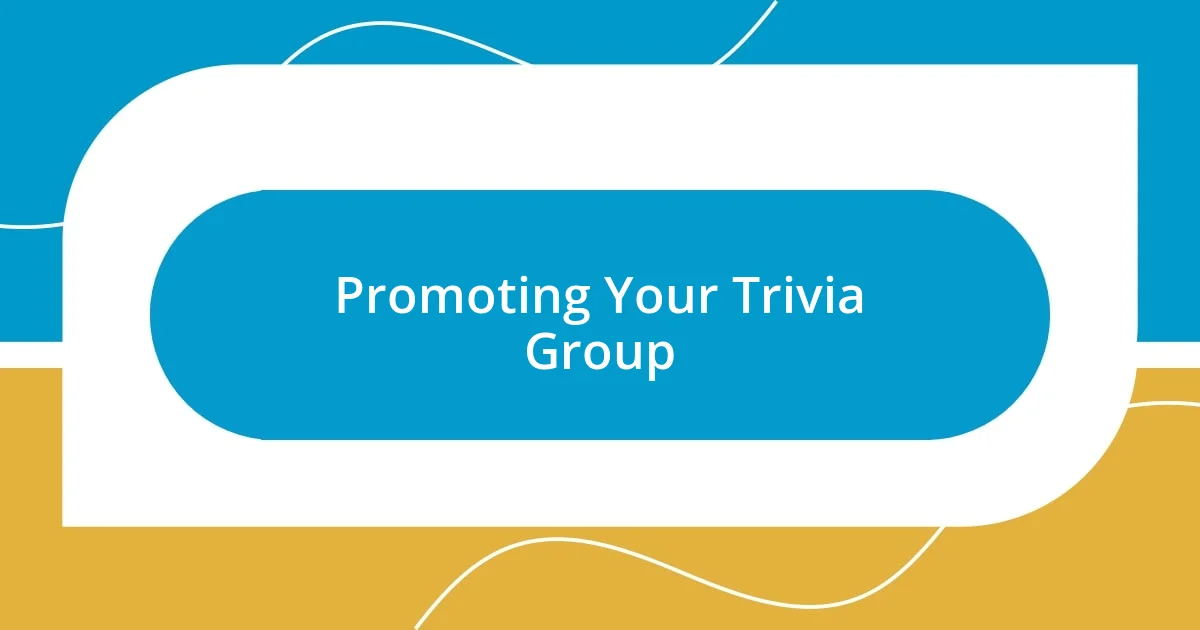
Promoting Your Trivia Group
Promoting your trivia group is all about getting the word out and creating excitement. In my experience, local social media platforms serve as excellent tools to reach potential participants. I recall one time when I posted a fun teaser question on our community page, and the engagement skyrocketed! People loved guessing, and it sparked conversations that led to more attendees for our next session. Have you ever thought about how a simple question can generate buzz?
Another effective strategy I’ve used is partnering with local businesses, like cafes or pubs, to host our trivia nights. I remember when a cozy neighborhood coffee shop agreed to let us use their space; they even advertised our group on their bulletin board. This not only brought new faces into our trivia circle but also fostered a supportive community vibe. Isn’t it amazing how local ties can enhance your group’s visibility?
Lastly, I’ve learned that creating visually appealing flyers can be a game-changer. I designed a colorful flyer with memorable trivia trivia logos and a catchy tagline, which I distributed around town, and it was an instant hit. People were curious to learn more, and it gave our group an air of professionalism. Have you considered how visuals can draw in a crowd? In my opinion, a little creativity goes a long way in making your trivia group stand out!
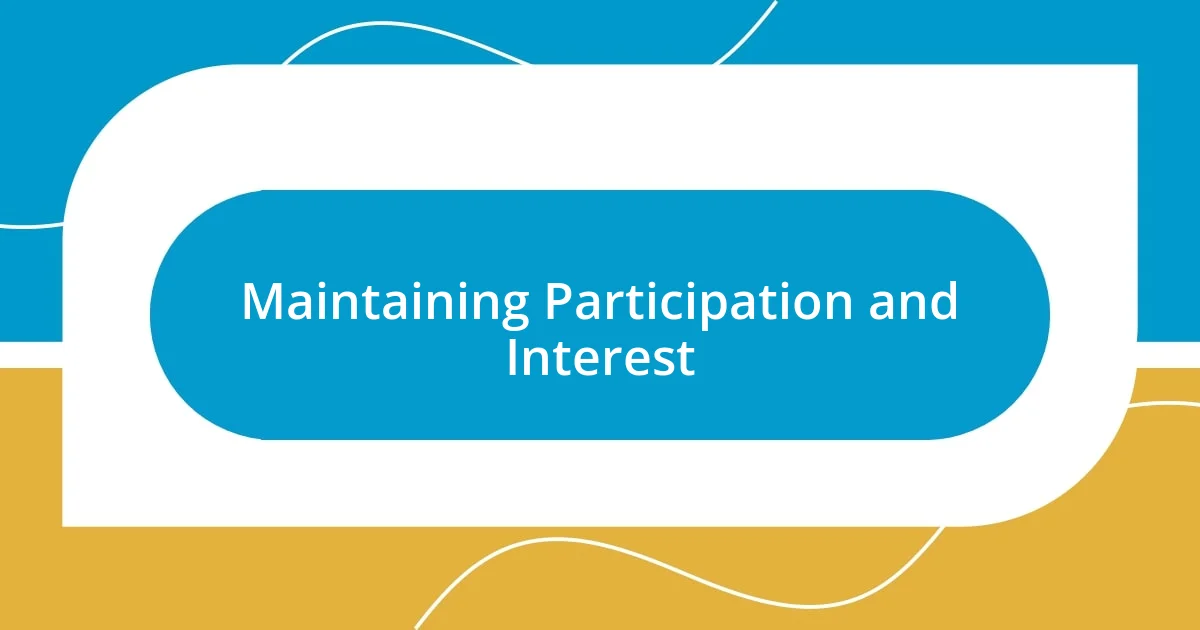
Maintaining Participation and Interest
Maintaining participation and interest in a trivia group is a delicate balance, but I’ve found several strategies that work wonders. One of the most effective techniques I implemented was rotating the responsibilities of quizmaster among group members. This not only keeps things exciting, but it also gives everyone a sense of ownership. I still remember the first time a shy member of the group took the reins; their excitement was contagious, and it brought a fresh perspective to the questions. Have you ever noticed how new leaders can energize a group?
In addition to varying the quizmaster, keeping the content fresh is crucial. I make it a point to regularly ask participants for topic suggestions. One time, a member proposed a round focused on 90s pop culture, and it was an absolute blast! Rediscovering those nostalgic hits sparked great stories and laughter, weaving deeper connections among us. It’s these moments that make me realize what a treasure trove of enjoyment trivia can be. Isn’t it fascinating how personal touch can ignite more passion?
Lastly, fostering a friendly and inclusive atmosphere can’t be understated. I always make an effort to remember little details about each participant—like their favorite trivia topics or a funny response they gave in the past. During a particularly tight round, someone blurted out a joke related to a question, and the laughter seemed to carry us all through the evening. Creating this sense of community is what truly keeps people coming back, don’t you think? Cultivating these bonds transforms trivia nights into something memorable rather than just another event.
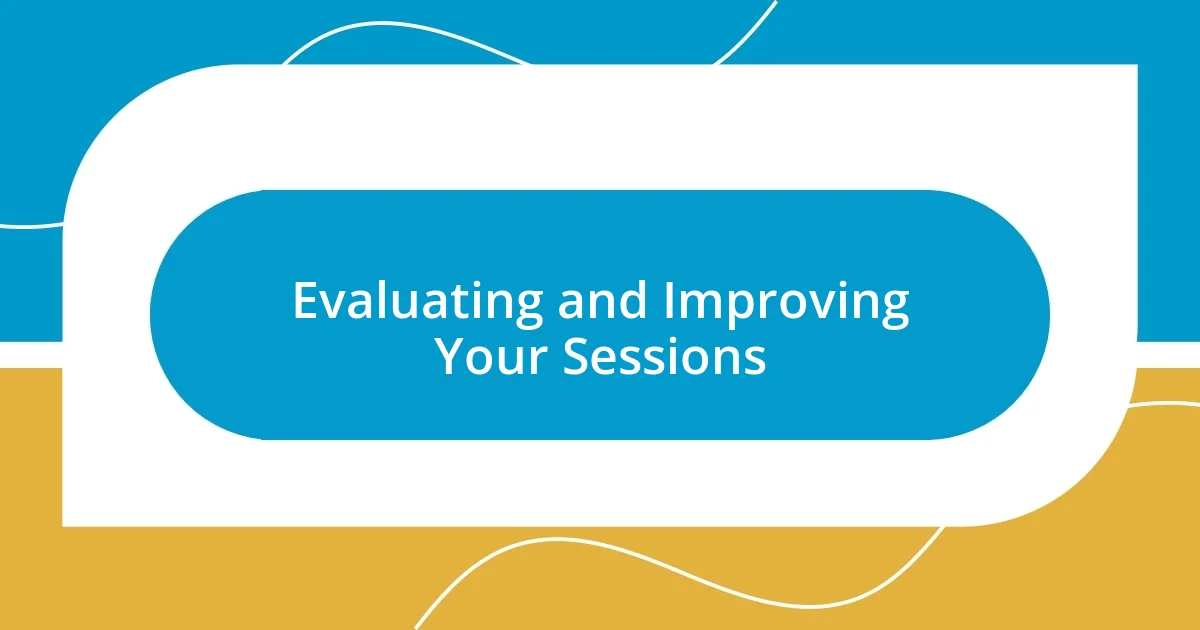
Evaluating and Improving Your Sessions
Evaluating your sessions is crucial to ensure that everyone remains engaged and entertained. I remember the first time I decided to get feedback right after a trivia night; I created a simple form asking participants what they enjoyed and what they thought could be improved. The responses surprised me! It turns out, some of my favorite categories weren’t resonating with the group, while others they suggested became instant favorites. Engaging your participants in this way truly opens up a dialogue; don’t you think it’s enlightening to hear what others value?
Additionally, tracking attendance and participation rates over time is immensely helpful. I meticulously maintained a spreadsheet where I noted how many people showed up for each session and which topics drew the largest crowd. I was thrilled to find that our themed nights always attracted more attendees, especially when we incorporated trivia around local events or pop culture phenomena. This data not only helps tailor future sessions but offers insights into what matters to your group. Have you considered how numbers can reflect the heart of your trivia community?
Finally, I encourage rotating topics to keep things vibrant and engaging. Sometimes, I throw in a wild card with unexpected themes, like a “Fun Facts About Desserts” round, and the participants’ reactions are priceless! I love to watch their faces light up as they connect over shared experiences related to their favorite treats. It makes me wonder: do we sometimes overlook the power of surprise in fostering greater engagement? Keeping our trivia nights dynamic and fresh ensures that every session feels unique, and that spark of novelty is what keeps us all coming back for more.



